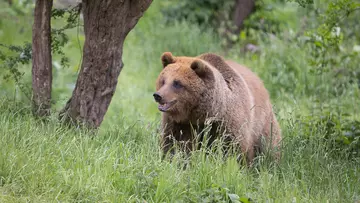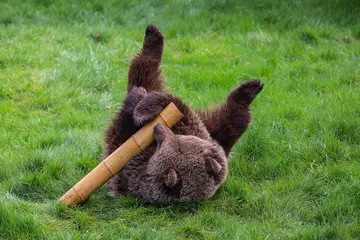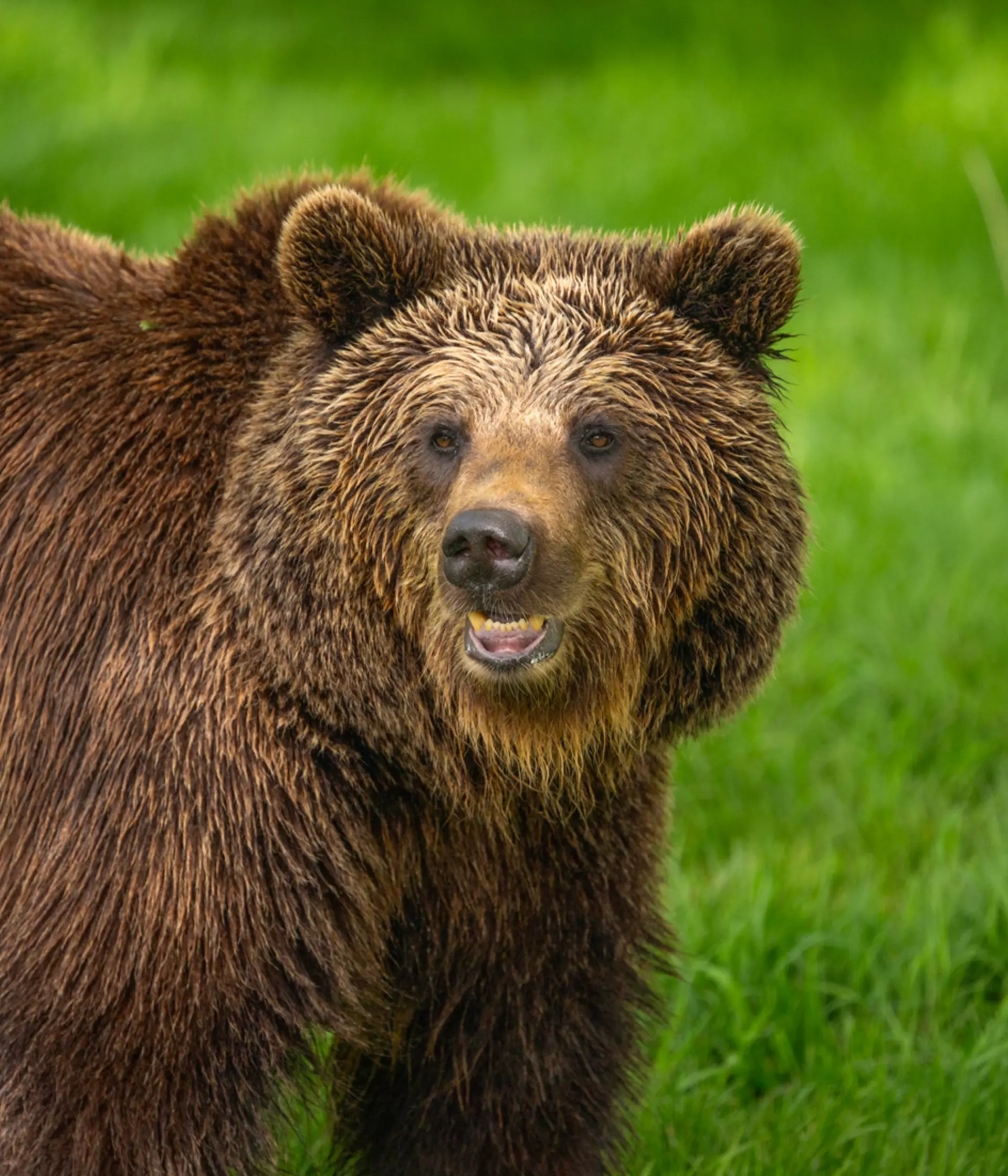
Brown bear facts

Are there European brown bears at Whipsnade Zoo?
Whipsnade Zoo is home to four European brown bears. Cinderella was joined by Mana, Minion and Naya in April 2023 from Orsa Predator Park in Sweden.
The bears have now woken up from their torpor over winter - look out for them playing in their woodland home and making a splash in the pool in the sunshine.
What do European brown bears look like?
European brown bears are one of the largest species of bear. As the name indicates, they are covered in brown fur, with the colours varying from a yellow brown to a dark brown. The bears are equipped with large paws, and claws that can grow up to 10cm long!

What do European brown bears eat?
A European brown bear’s diet is made up of a mixture of grasses, berries, sedges, fungi, mosses, nuts, fruit, honey, insects, birds and fish.
What threats do European brown bears face in the wild?
While European brown bears are recognised as Least Concern on the IUCN red list, the threats they face include hunting and habitat loss.

